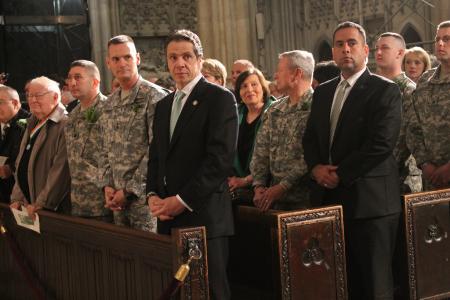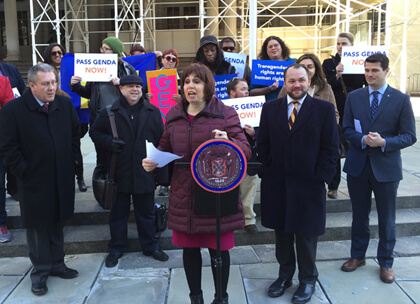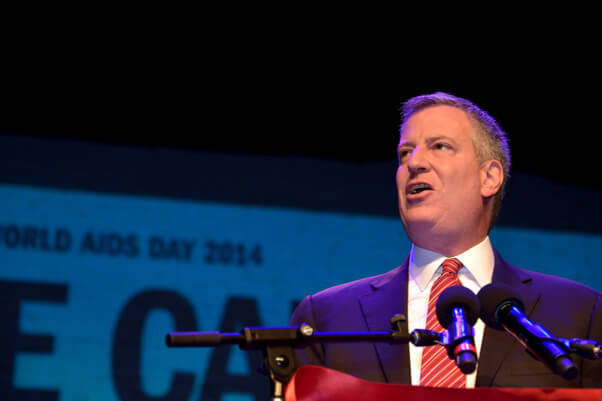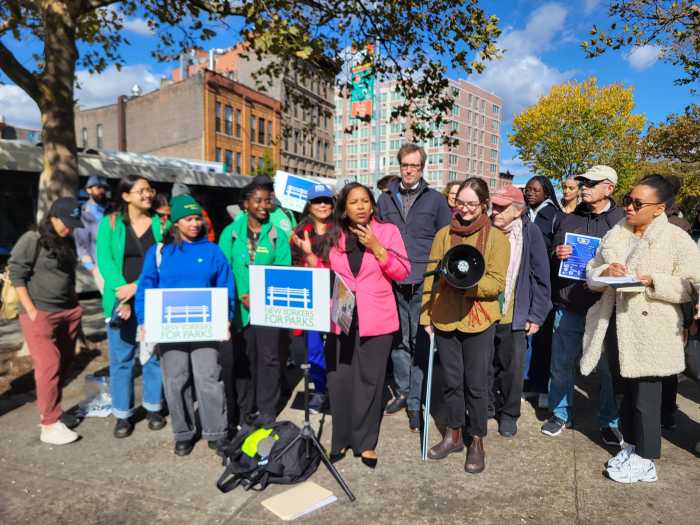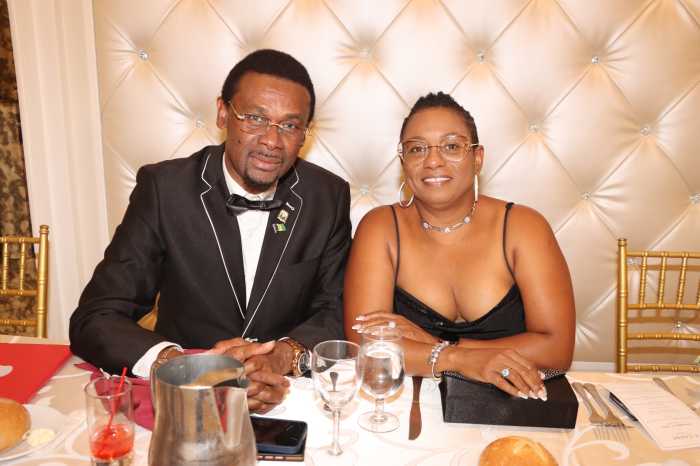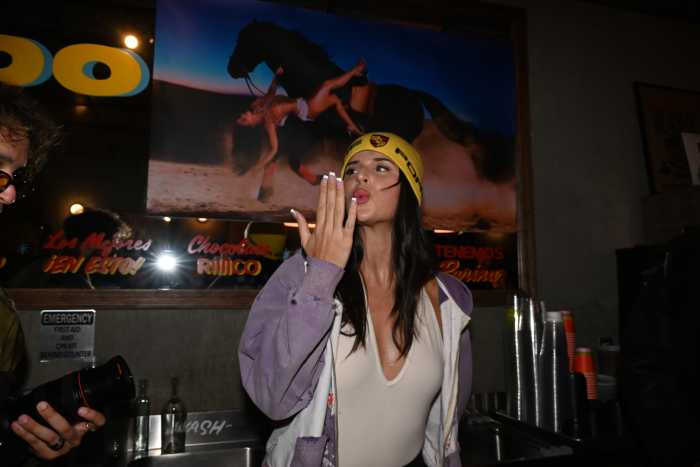The 69th Infantry Regiment of the New York National Guard marching in the St. Patrick's Day Parade. | ARMY.MIL
Protests this year against New York’s St. Patrick’s Day Parade, which for decades has banned identifiable Irish LGBT groups from participating, targeted the city’s decision to continue allowing municipal personnel –– police, fire, corrections, and more –– to march in their uniforms. This despite the fact that Mayor Bill de Blasio and other leading elected officials boycotted the discriminatory parade and major sponsors are now abandoning it.
Mostly ignored –– only a few years after gays and lesbians were first allowed to serve openly in the military –– was the fact that most of the uniformed military in the parade were on duty and marching on the government’s dime.
“It’s an outrageous misuse of taxpayer dollars,” said Bill Dobbs, a veteran peace and gay activist, “and more evidence that the parade is toxic to human rights.”
Governor, who heads the New York National Guard, Defense Department offer no comment on discriminatory event
The 69th Infantry Regiment, part of the New York National Guard and more than 700 strong, led the parade for the 163rd year on March 17. Also in the line of march were color, honor, and ceremonial guards from the Army, Navy, Marines, Coast Guard, Merchant Marine, and Air Force out of Washington, DC, and elsewhere, the 88th Brigade of the New York Guard, and military bands and pipe-and-drum units from all over.
Eric Durr of the New York Division of Military and Naval Affairs Office of Public Affairs would not respond to questions about the appropriateness of National Guard personnel participating on duty in a parade that discriminates, but told Gay City News that all guard units are entitled to participate in one local parade while on duty and that St. Patrick’s Day is the 69th’s “traditional unit day.” Others participate in Memorial Day and Flag Day parades, he said.
“The 69th’s decision to march predates anything” related to the controversy over the parade’s exclusionary policy, Durr said. “They also go to Mass, whether Jewish, Protestant, or Catholic,” though he insisted that no guardsman or woman is obligated to participate and could opt to participate in an alternate drill.
Governor Andrew Cuomo, the civilian head of the New York National Guard at Mass at St. Patrick's Cathedral with members of the 69th Regiment. | DVIDSHUB.NET
Governor Andrew Cuomo, who does not participate in the Fifth Avenue parade, is the civilian head of the New York National Guard. His office did not respond to an inquiry about the appropriateness of guard unit participation, nor did the US Department of Defense.
Emmaia Gelman, a leader of the group Irish Queers which led the LGBT protest against the parade this year after picking up the mantle years ago from the Irish Lesbian and Gay Organization, said just as they are pressing the case for getting uniformed city personnel out of the parade, they want uniformed, on-duty servicemembers out as well.
“We’re not pretending that the military is going to suddenly stop being violent and repressive if we get soldiers out of the parade,” Gelman said. “But it actually is important to stop the military from normalizing anti-queer, religious-right bigotry. And in this case, there’s a legal constraint that says they have to stop.”
In order to justify keeping Irish LGBT groups out, the St. Patrick’s Day Parade Committee has redefined itself as a “private, Catholic religious procession” rather than simply a celebration of Irish heritage.
In Boston, the St. Patrick’s Day Parade is run by the Allied War Veterans, which also has a policy that identifiable LGBT groups are not welcome.
“It is not a sexuality parade,” said Philip J. Wuschke, Jr., the parade organizer. He said there are some on-duty guard units marching in his parade, “but most of them are active reservists on their own time.” His parade, too, has lost sponsors over the exclusion of Irish gay groups.
In the Wikipedia entry for the 69th, its roots in the Revolutionary War are noted as are the tensions that arose in 1855 between Protestant regiments and Catholic ones like the 69th. When the native-born American “Gangs of New York” leader Bill the Butcher Poole was killed and two Irishmen were arrested for the murder, Know Nothings retaliated against Catholics. The 69th and 9th (also Catholic and known for its Irish revolutionary sympathies) were dispatched to restore order.
“It was decided that military units would not march in the St. Patrick’s Day Parade because of the tensions,” the entry says, but once released from its duties battling Know Nothings that day, the 69th “marched with fixed bayonets down Broadway.” The controversy over military participation in the parade is nothing new.

